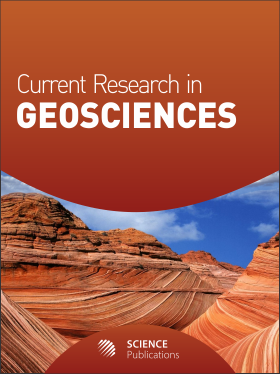Assessing the Applicability of Landslide Databases for Hazard Management Using Objective and Subjective Models: Australian Geoinformatic Case
- 1 Gorgan University of Agricultural, Iran
Abstract
Problem statement: In order to assess the applicability of Australian landslide databases as a hazard management support system, current hard and soft literature and data sources were screened. This assessment resulted in the selection of four main data bases including national landslide database (A), Peril Aus ІІ (B), the Cities project (C) and analytical study of Fell (D). Approach: In this study applicability of databases was evaluated using two different methods: Numerical model (objective) and AHP model (subjective). After statistical analysis, the results of this evaluation were combined. Due to shortage of a definite standard, a simple numerical model has been developed with 4 main complex parameters (each one contains 4 minor parameters). This includes: Graphical-statistics, geo-spatial, physico-temporal and techno-management, value scale of 0-3 and 4 applicability classes and relative importance of the databases has been evaluated. Relative priority of the databases as competitor alternatives was determined using Analytical Hierarchy Process (AHP) technique as a math-logical tool for decision making in uncertainty, by expert based pair-wise comparison (CR = 0.0296). Finally its value was normalized to the scale of numerical model for comparison. Results: According to the results, in both models applicability classes of databases range from II-IV with only one class difference. With merging numerical outputs of two models by a 80% rank correlation in a single paradigm, the applicability class improve from ІІ-ІІІ only in database A, but for others remain constant. Rank correlation between databases in different levels imply to different relationships, so that some of them such as RAB, RAC, RAD and RBC can be explained with the inductive theorems of genetically statistic-thematic multi-relations of databases. The differences of strengths and weaknesses of the Australian four main landslide databases that mainly affect their practical applicability for hazard management are considerable in spite of genetic relation and data overlaps. Thus, practical applicability of each database can be characterized well by two contrast objective and subjective models. Conclusion: As a result, applicability of Australian landslide databases is of class ІІІ (high). Thus, it still needs further development and complementary actions especially in geo-technical, geometric, impact (damage) data and map scale.
DOI: https://doi.org/10.3844/ajgsp.2010.7.11

- 6,656 Views
- 3,767 Downloads
- 2 Citations
Download
Keywords
- Landslide database
- applicability class
- numerical model
- Analytical Hierarchy Process (AHP)
- hazard management
